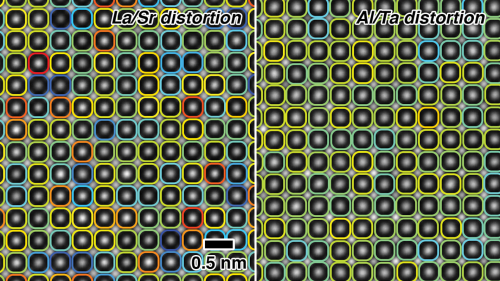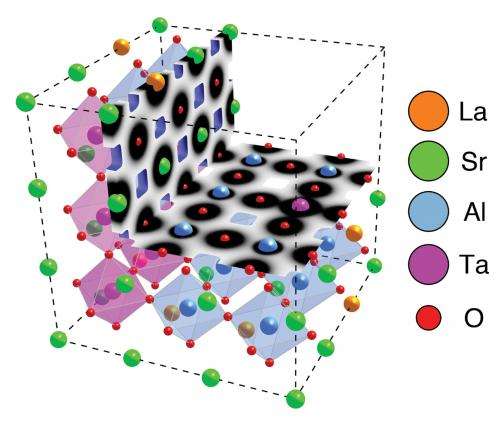Researchers glimpse distortions in atomic structure of materials

Researchers from North Carolina State University are using a technique they developed to observe minute distortions in the atomic structure of complex materials, shedding light on what causes these distortions and opening the door to studies on how such atomic-scale variations can influence a material's properties.
Researchers have known for years that the properties of complex materials, such as alloys, are influenced by how the material's component atoms are organized - i.e., where the atoms fit into the material's crystal structure. But the devil was in the details.
"We knew where the atoms were on average, but we also knew that there were variations in a material - there can be significant displacements, where atoms don't fit into that average pattern," says Dr. Doug Irving, an associate professor of materials science and engineering at NC State and co-author of a paper describing the new work.
"However, detecting these distortions required indirect methods that could be difficult to interpret, so we couldn't fully explore how a material's atomic structure affects its properties," says Dr. James LeBeau, an assistant professor of materials science and engineering at NC State and corresponding author of a paper describing the new work.
"Now we've come up with a way to see the distortions directly, at the atomic scale," LeBeau says. "We can create a precise map of atomic organization, including the distortions, within a material. Not only which atoms fit into the structure, but how far apart they are, and how distortions in the structure are related to the chemistry of the material."
The work builds on a technique LeBeau developed called revolving scanning transmission electron microscopy (revolving STEM).

To test the technique and learn more about the links between structural distortions and chemical bonds, the researchers looked at a complex material called lanthanum strontium aluminum tantalum oxide (LSAT). They picked LSAT because there is significant variability in the nature of the chemical bonds within the material.
"It's a mess," LeBeau says. "We didn't know how the complexity of those bonds influenced structural distortions, and we wanted to see if revolving STEM would give us any insights."
It did.
The researchers found that the weaker chemical bonds that hold lanthanum and strontium in place in LSAT's atomic structure made them more susceptible to being pushed or pulled by small variations in their chemical environment.
"We never would have been able to directly see the extent of that variation before," LeBeau says.
"Now that we can see these subtle distortions, and know what causes them, the next step is to begin work to understand how these structural differences affect specific properties. Ultimately, we hope to use this knowledge to tailor a material's properties by manipulating these atomic distortions."
More information: The paper, "Direct observation of charge mediated lattice distortions in complex oxide solid solutions," was published online Feb. 13 in Applied Physics Letters.
Journal information: Applied Physics Letters
Provided by North Carolina State University





















